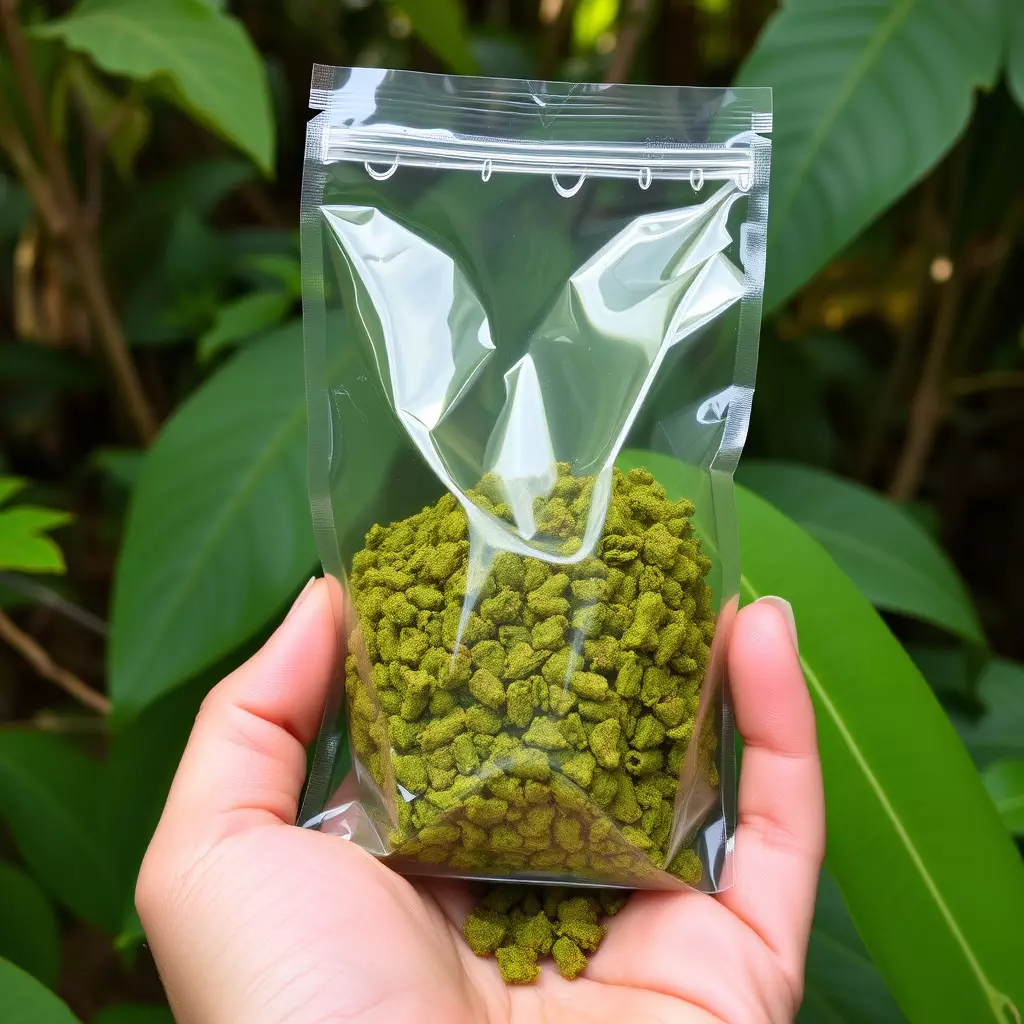Kratom, from the Mitragyna speciosa tree, has garnered attention for its potential role in emotional regulation due to its alkaloids mitragynine and 7-hydroxymitragynine. These substances may modulate mood by interacting with opioid receptors in the brain, offering a calming effect. While early studies suggest kratom could help individuals manage stress and emotional distress, it's crucial to approach its use with caution due to variability in individual responses and its complex legal status. The impact of kratom on emotional regulation should be carefully considered within a comprehensive therapeutic regimen that includes professional oversight, appropriate dosing, and a holistic lifestyle approach. It's essential for individuals to consult healthcare professionals before incorporating kratom into their wellness practices, given its potential efficacy and safety concerns. Regular monitoring of emotional responses and staying informed about legal regulations are key for those considering kratom as part of their emotional regulation strategy.
Emotional regulation is a cornerstone of psychological well-being, and the natural substance Kratom has garnered attention for its potential role in this area. This article delves into how Kratom can help mitigate emotional reactivity, offering insights into its mechanisms for emotional self-management. We explore the science behind Kratom’s effects and provide guidance on integrating it into one’s emotional regulation practices safely and effectively. Understanding the nuances of Kratom’s impact on emotional regulation is key to harnessing its benefits responsibly.
- Unraveling Emotional Regulation: The Role of Kratom in Mitigating Emotional Reactivity
- Kratom's Mechanisms for Emotional Self-Management: Understanding the Science Behind It
- Integrating Kratom into Emotional Regulation Practices Safely and Effectively
Unraveling Emotional Regulation: The Role of Kratom in Mitigating Emotional Reactivity

Kratom, a botanical derivative from the leaves of Mitragyna speciosa, has garnered attention for its potential role in emotional regulation with kratom. Preliminary studies suggest that kratom contains alkaloids such as mitragynine and 7-hydroxymitragynine, which may influence mood and provide a modulating effect on emotional responses. The interaction of these compounds with the brain’s opioid receptors can lead to an attenuation of emotional reactivity, offering a sense of calm and composure in individuals who consume it. This can be particularly beneficial for those experiencing heightened emotional states or suffering from mood disorders where emotional regulation is impaired.
Furthermore, the use of kratom for emotional regulation with kratom is a subject of ongoing research. Users often report a decrease in anxiety and stress levels, coupled with an enhanced ability to respond to situations with a more measured and balanced approach rather than reacting impulsively. While the scientific community continues to explore the efficacy and safety of kratom, it is important to approach its use with caution and within the framework of legal and medical guidelines. Proper dosage and monitoring are crucial, as individual responses can vary significantly, and the long-term effects of kratom consumption remain a topic of debate. As such, kratom may offer a promising avenue for individuals seeking natural alternatives to manage emotional reactivity, but it should be considered alongside other therapeutic practices and under professional guidance.
Kratom's Mechanisms for Emotional Self-Management: Understanding the Science Behind It

Kratom, a tropical evergreen tree native to Southeast Asia, has garnered attention for its potential role in emotional regulation. The mechanisms by which kratom exerts its influence on mood and emotional reactivity are multifaceted and involve interactions with the brain’s reward pathways and opioid receptors. Mitragynine and 7-hydroxymitragynine, two of its primary alkaloids, bind to mu-opioid receptors, leading to the modulation of pain perception, mood enhancement, and a reduction in stress responses. This binding action can help mitigate emotional distress by inducing a state of calm and well-being, thereby aiding individuals in managing their emotional reactions to various stimuli.
Furthermore, kratom’s effects on the brain’s monoamine neurotransmitters, including serotonin, norepinephrine, and dopamine, contribute to its role in emotional regulation with kratom. By modulating these neurotransmitters, kratom can influence mood and emotional states. The balance achieved through this modulation may help users maintain a more stable emotional baseline, reducing the intensity of emotional reactivity to situations that would typically trigger a strong emotional response. However, it is crucial for individuals to approach the use of kratom with caution, as its effects can vary significantly based on dosage and individual physiology, and it is subject to regulatory oversight due to its potential for abuse and dependency. Users are advised to consult with healthcare professionals before incorporating kratom into their wellness regimen to ensure safe and effective use.
Integrating Kratom into Emotional Regulation Practices Safely and Effectively

When considering the integration of kratom into emotional regulation practices, it’s crucial to approach its use with caution and informed awareness. Kratom, derived from the leaves of the Mitragyna speciosa tree, has been traditionally used in Southeast Asia for its stimulating and calming effects. Its alkaloids, mitragynine and 7-hydroxymitragynine, are thought to interact with the body’s opioid receptors, potentially influencing mood and pain perception. In the context of emotional regulation, kratom may offer support by helping individuals manage stress, anxiety, and emotional reactivity. However, due to its potency and the complexity of individual physiology, it is imperative to use kratom responsibly and within the bounds of safe dosing guidelines. Consulting with healthcare professionals is essential before incorporating kratom into any emotional regulation strategy to ensure that it complements rather than complicates mental health efforts.
Safety and efficacy are paramount when using kratom for emotional regulation. Users should be well-informed about the proper strains, dosages, and potential interactions with other substances or medications. It’s also important to maintain a holistic approach that includes therapy, stress management techniques, and a balanced lifestyle to achieve the most beneficial outcomes. Regular monitoring of kratom’s effects on one’s emotional state is necessary to adapt usage according to individual needs and responses. Additionally, staying informed about the legal status of kratom in one’s jurisdiction is crucial, as regulations can vary widely and impact availability and use. By approaching kratom with a blend of scientific understanding, professional guidance, and personal mindfulness, individuals can explore its potential role in their emotional regulation practices effectively and safely.
Emotional regulation with kratom emerges as a multifaceted approach to mitigating emotional reactivity. By elucidating its biological mechanisms, users can better understand how this substance interacts with their neurological systems to promote self-management of emotions. The article underscores the importance of integrating kratom into emotional regulation practices judiciously and with caution, emphasizing safety and efficacy as paramount. As such, individuals seeking to harness the potential benefits of kratom for emotional self-regulation should approach its use with informed discretion, guided by scientific understanding and responsible application. With further research, kratom’s role in the realm of emotional well-being may be affirmed, offering a natural alternative for those navigating the challenges of emotional reactivity.






